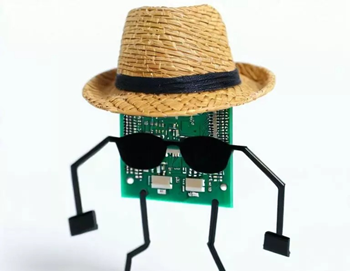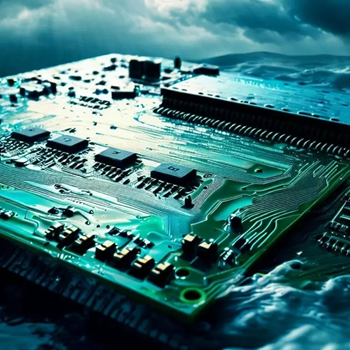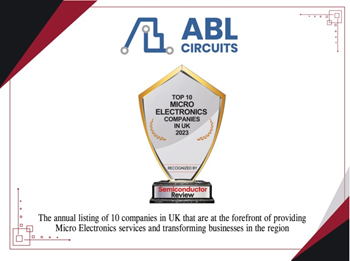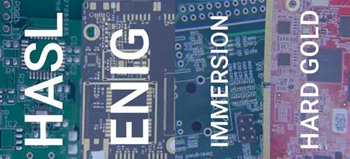PCB Newsletter: Key trends going into 2023
As we head into a new year, it’s important to take a step back and analyse not only the challenges and opportunities faced in 2022, but what we can learn from them as we head into 2023. It is safe to say that since the pandemic there has been a huge amount of change within the industry, so keeping on top of the latest news, trends and technology is important to ensure you are ahead of the competition. In this blog we will analyse some of the key trends for 2023, to keep you up to date on the latest PCB industry news. Market size and growth Globally, the PCB industry was valued at $78 billion in 2021 and is expected to hit $128 billion by 2030. The market is expected to experience vast growth in the coming years, due to the popularity and demand for flexible circuit boards for smartphones, tablets, laptops and other consumer electronics, which are a daily necessity and commodity for consumers. Additionally, advancements in medical devices and automation have seen an increase in demand for printed circuit boards, as consumers are looking for vehicles that can easily link to their smartphones. As small wearable technology, such as smart watches, increases in popularity, so will the demand and growth for flexible PCBs in the industry. Another area that will see significant growth for the industry is 3D printing, as the demand for 3D applications grows. 3D printed circuit board electronics work by printing a substrate item layer by layer alongside a liquid ink on top, followed by surface mount technologies. The demand for 3D printed boards is due to grow. This is due to how they are created, and their various abilities, as the circuits are printed on top of an existing shape. This means the manufacturing techniques allow the circuits to take new shapes that were not feasible previously with traditional PCB manufacturing. This allows for greater manufacturing opportunities and improved products. Additionally, HDI boards (high density interconnect) are expected to be the fastest growing in the industry between 2022 – 2030. This is due to their excellent circuit density in comparison to traditional circuit boards, which subsequently offer great potential for products and technology in the industry. The nature of HDI boards also means manufacturers can apply elements to either side of the printed circuit board, offering more opportunities, and hence increasing their popularity within the industry. That being said, the industry has been poor in the UK, with the market losing 5.5% CAR in the last five years, and the industry currently sitting at £778.7million. Technology trends PCB technology trends are ever-evolving, with new products and machines coming into the market to help improve quality. As we head into 2023, technology will be moving more towards 3D printed circuit boards alongside IoT, including wearable technology, such as smart watches. In order to create boards for wearable technology, manufacturers will see a need to increase their supply of flexible boards and flex-rigid PCBs in order to keep up with demand. The demand for PCBs for IoT goes beyond wearable technology and also includes products within the home, such as internet networks or alarms that can be controlled remotely. All of these products and technologies require specific PCBs that will affect the manufacturing process. Additionally, the increase in 5G technology, masts, and availability to networks across the UK means an increase in demand for mixed-signal PCBs with the higher signal frequencies required for 5G functionality. AI machine learning technology has also made its way into the PCB industry, helping to improve the quality and production of boards. The AI industry has been growing for many years, expanding into nearly every industry and area of lifeThe PCB industry is no different, and the trend is due to continue. AI within PCB manufacturing uses data aggregated from several sensors. Machine learning interprets the accumulated data, which in turn is used to improve the PCB efficiency, speed, and quality of production. This PCB technology trend is also likely to grow due to the advantages it brings to the manufacturing process, such as increased efficiency, enhanced performance, and cost improvements. Material Trends As manufacturers aim to become more environmentally friendly and sustainable, the materials that will be used within the industry are likely to change. With many companies and manufacturers aiming to reach strict, formalised net zero goals, there will be a big focus in the coming years on the materials being used within the manufacturing process. It is estimated that within the next decade, 20% of PCBs could be manufactured using more sustainable methods. The materials that will see increased demand will be, for example, lead-free solder, fibreglass, or even newer adapted materials for connectivity such as resin-coated copper. Manufacturing trends With the arising technology trends, such as the demand for 5G capable PCBs, the manufacturing process needs to adapt in line. In order to manufacture high-frequency PCBs for 5G use, the techniques used within manufacturing will change. For example, the modified semi-additive process (MSAP) technique needs to be used, instead of the traditional etching approach, in order to obtain high circuit density with low signal loss. A process called photolithography is used here to ensure precision during the etching process. Advanced automated optical inspection (AOI) is also used within the manufacturing process for 5G PCBs to help identify any possible issues with the board, alerting manufacturers early on in the process. AOI works by uploading a scan or a pre-programmed board, or a ‘master board, to the system. All boards that then pass through the system after this will be compared against this master board, to ensure everything is correct, and identify any faults that need to be corrected in the manufacturing process. Industry challenges and opportunities As we start the new year, the very first thing to consider for 2023 and your manufacturing needs is the Chinese New Year. The year of the Rabbit is upon us, and this year Chinese New Year falls earlier than usual, arriving on the 22nd January. This means that manufacturers must ensure they are organised and have planned ahead for their inventory, as this holiday will cause delays in supply and shipment for any supplies or components from China for Q1. This brings us to the next challenge the PCB industry could face this year;shipment. As of late, shipment costs and premiums have been fluctuating a huge amount. Previously, the issues mainly surrounded capacity, and premium costs were paid to ensure your components were shipped in time during peak seasons. Now, however, the issue is not only capacity but cost in tandem. The industry is also still feeling the effects of the semiconductor chip shortage, exacerbated by the Covid-19 pandemic. The conflict between Russia and Ukraine further intensified the ongoing issue, as Ukraine supplies 25-35% of the world’s purified neon gas, and Russia supplies 25-30% of palladium, a rare metal used for semiconductors. While supply has been improving, it is still not back to pre-pandemic levels, and could continue to see fluctuation throughout 2023 and beyond. Read more on the semiconductor chip shortage and how OEMs can manage this in our recent. It’s not all doom and gloom for the industry. PCB technology trends and advancements also present a plethora of opportunities for manufacturers to get their teeth stuck into. From the expansion of IoT devices, to 5G network capabilities and 3D-printed electronics, the industry can see exponential growth, presenting a range of opportunities for manufacturers to expand into these areas. 3D-printed electronics present a particularly interesting opportunity due to their properties. As 3D-printed electronic circuit boards can be manufactured to go beyond the capabilities of traditional PCBs in regards to their shape, sizes, and properties, they present opportunities for products that were not previously possible. Where can you go for further information? There is a lot of new technology within the industry, such as 3D printed circuit boards, to get on board with. While the industry is still suffering from the repercussions of the semiconductor chip shortage and the pandemic, there is still plenty of positive movement happening. At ABL Circuits, we have over 40 years of specialist knowledge, both in traditional PCBs, but also with the latest technology, meaning we can help you at any stage of your journey. Whether you need some consultancy on the best equipment, technology or design for your boards, or you need manufacturing and assembly help to bring it all together, we can help you every step of the way, and give valuable advice to keep you ahead of the curve. If you’d like to find out more about how we work and how we can help you, get in touch for a free quote. If you’d prefer to arrange a discussion with a member of our team, then you can reach us via the contact pageVisit the ABL Circuits Ltd website for more information on PCB Newsletter: Key trends going into 2023





